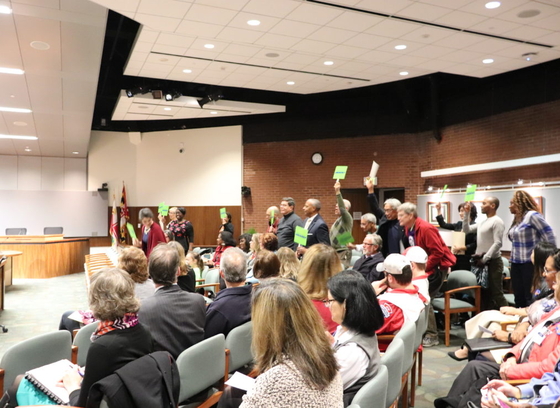Building a Budget
The operating budget is a comprehensive plan by which the County’s operating programs are funded for a single fiscal year. The capital budget (CIP) is the plan for the construction and acquisition of all physical assets over a six-year period.
Adopting the County budget involves making choices about what local services should be funded and at what level. The Howard County Charter and the Maryland Constitution require a balanced budget, meaning revenues generated must cover the appropriated expenses.
The County’s fiscal year, the 12-month period covering the annual budget, starts on July 1st and ends the following June 30th.

The County’s fiscal year - the 12-month period covering the annual budget - starts on July 1st and ends the following June 30th.

First Step – The Spending Affordability Advisory Committee (SAAC)
- The SAAC members, appointed by the County Executive in the fall, are tasked with examining fiscal data, reviewing multi-year revenue and expenditures and reporting their findings which will be used as a guideline in developing the upcoming year’s budget.
- Residents can follow the work of the Committee by viewing all their meetings and materials on the County’s website here.
Second Step – Executive Development and Review
- The County Executive holds two public hearings (December and March) for residents to express their budget priorities.
- County agencies develop budget requests and submit them to the County Executive for review.
- The County Executive presents the proposed capital (4/1) and operating (4/20) budgets to the County Council.
Third Step – County Council Review and approval
- The Council conducts a series of public hearings and work sessions to review the proposed budget.
- Residents are provided an opportunity to comment on the budget before the Council’s approval.
- The budget is approved on or before June 1.
The County’s fiscal year, the 12-month period covering the annual budget, starts on July 1st and ends the following June 30th.
1. The Spending Affordability Advisory Committee (SAAC)
- The SAAC members, appointed by the County Executive in the fall, are tasked with examining fiscal data, reviewing multi-year revenue and expenditures and reporting their findings which will be used as a guideline in developing the upcoming year’s budget.
- Residents can follow the work of the Committee by viewing all their meetings and materials on the County’s website here.
2. Executive Development and Review
- The County Executive holds two public hearings (December and March) for residents to express their budget priorities.
- County agencies develop budget requests and submit them to the County Executive for review.
- The County Executive presents the proposed capital (4/1) and operating (4/20) budgets to the County Council.
3. County Council Review and approval
- The Council conducts a series of public hearings and work sessions to review the proposed budget.
- Residents are provided an opportunity to comment on the budget before the Council’s approval.
- The budget is approved on or before June 1.
The Howard County Executive will hold two Budget Hearings for each Fiscal Year, usually in December and March. The hearings provide residents with an opportunity to make their voices heard, share concerns and provide input on priorities for the upcoming fiscal year.
The Spending Affordability Advisory Committee (SAAC) is tasked with making recommendations to the County Executive on revenue projections, General Obligation bond authorizations, long-term fiscal outlook, and County revenue and spending patterns.
SAAC is directed to prepare and present a report to the County Executive, on or before March 1 annually including:
- Projected General Fund revenues for the upcoming fiscal year;
- Recommended new county debt (General Obligation bonds) authorization;
- An analysis of the long-term fiscal outlook including multi-year projections; and
- Other findings and/or recommendations that the committee deems appropriate.
The committee consists of citizens and representatives of major organizations along with county staff to serve as advisors to the Committee. Each member of the County Council was invited to nominate one member.